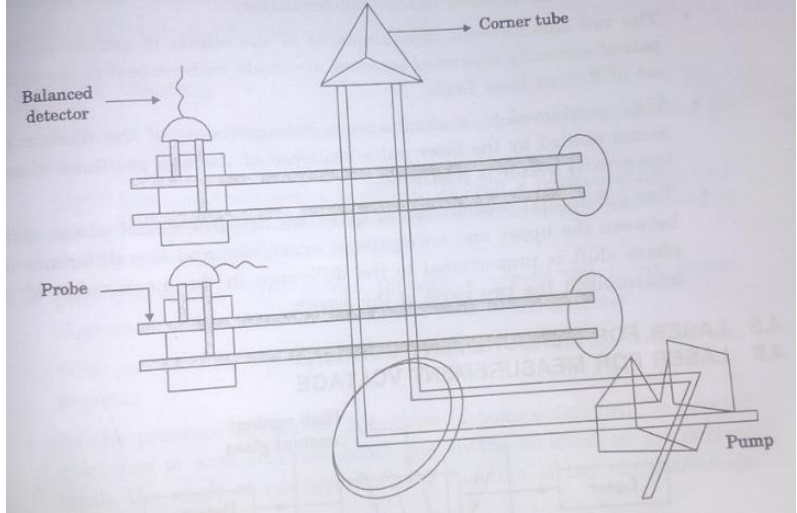Chapter: Fiber optics and Laser instruments : Industrial Applications of Laser
Laser For Measurement of Acceleration
Laser For Measurement of
Acceleration

An atom
interferometer based on an atomic fountain of laser cooled caesium atoms using
laser light has been used to make a very accurate measurement og ‘g’
Principle
In this
interferometer, the frequency of the light is changed in a phase continous way
so that it remains resonant with the transitions as the atoms accelerate under
the influence of gravity. As a consequences, the phase difference between the
two paths in the interferometer is proportional to the gravitational
attraction.
Basic atom Interferometer:
Caesium
atoms are extracted from a low pressuere back ground vapour and loaded into a
magneto optical trap during a 600 ms period. The magnetic field is turned off
and the captured atoms are launched into the atomic fountain of this sensor
using a specialized technique known as moving polarization gradient optical
molasses.
During
this period , further cooling of the ‘launched’ atoms occur , using resonant
techniques. In the final stage of the launch , the laser intensities are
reduced to zero in 400µs so that the atoms are cooled. The launched atoms are
subjected to a series of pulses that place the atoms in a specific internal
state with an effective internal temperature of 10nK.
This low
velocity spreads leads to a high fringe contrast over a period of about 150
ms.The interferometer measurements occur in a magnetically shielded region. This
type of device is capable of measuring ‘g’ better than a part per billion
accuracy.
Cold atom Gradiometer:

An atom
interferometry technique has been used to create a gravity gradiometer using
two laser cooled and trapped sources of caesium atoms and a pair of vertically
propagating laser beams. The device is arranged so that two independent
measurements of acceleration can be made using the two vertically separated
ensembles of caesium atoms in free fall under the influence of gravity.
Working:
The
caesium atoms are launched into a veartical trajectory form the magneto-
optical trap and conditioned to be in a particular internal state using optical
and microwave techniques. These atoms are then suitable for interacting with
the gravity vector and then changes in the atomic states due to gravitional
acceleration which can be detected in the interferometer.
The
simultaneous measurements of the effects of gravity on the pair of vertically
separated sensors are made with respect to the same set of Raman laser fields.
This is achieved by a simultaneous measurements of the fraction of atoms
excited by the laser pulse sequence at the two positions where the gravity
vector is measured.
The
differential acceleration is given by the differential phase shift between the
uppermand lower atomic ensembles and this difference in phase shift is
proportional to the difference in phase shift is proportional to the difference
in the mean value of ‘g’ measured at the two part of the sensor.
Related Topics